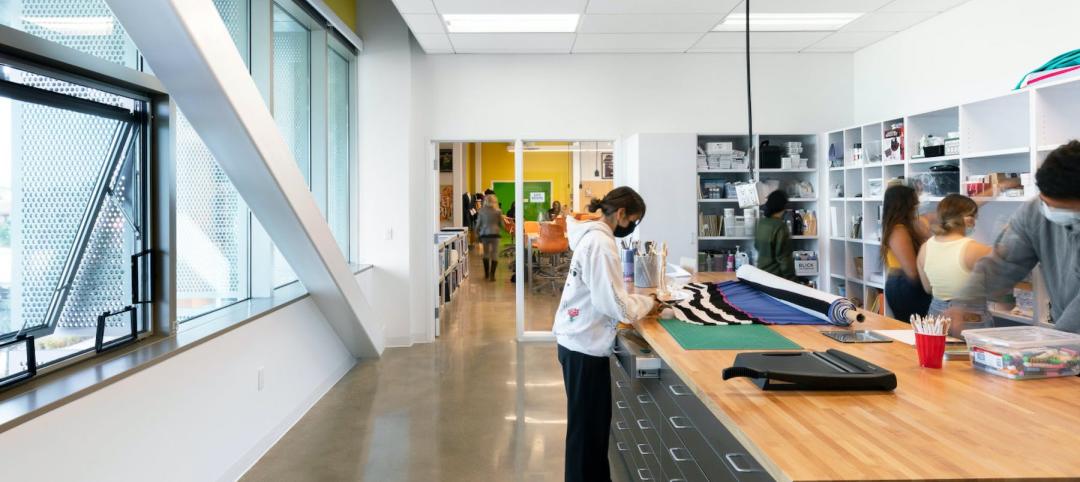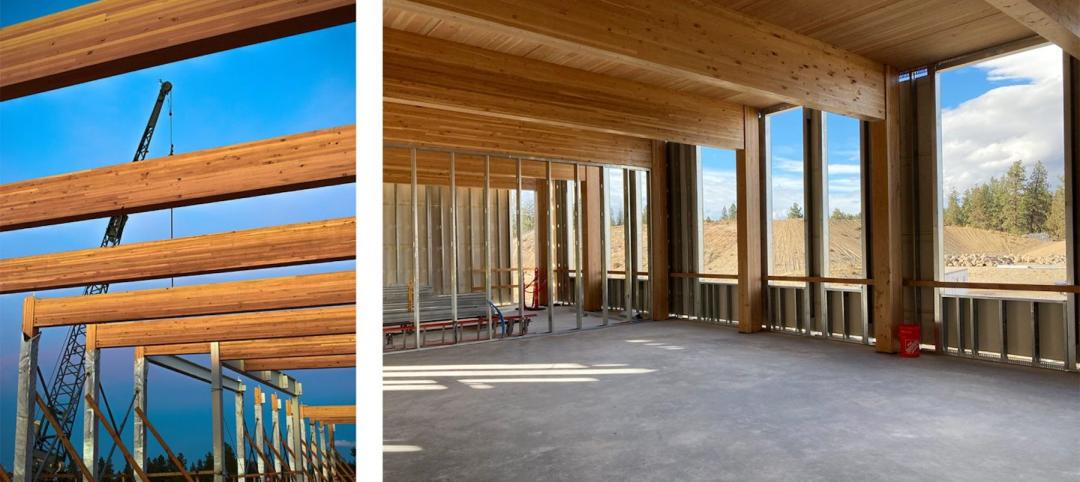Although 2013 isn’t likely to be anyone’s idea of a blockbuster year for real estate performance, landlords across an array of commercial property types are gaining pricing control and increased rental income from their assets. Keys to the equation for property types other than apartments are construction volumes near 40-year lows and incremental job gains from a handful of growth sectors, including energy and technology.
“The lack of new construction has been a saving grace since the beginning of the recession,” said Jay Koster, Americas President for Capital Markets at Jones Lang LaSalle. “We’re also seeing accelerated obsolescence among older buildings as tenants upgrade to higher quality and more efficient space, and that is helping to fill marketable properties and drive up rents, even with only slow underlying growth.”
Multifamily retains strength: Rental apartments, by contrast, have far surpassed other property types in the development cycle and are approaching peak performance levels in many markets, according to Jones Lang LaSalle’s First Quarter 2013 Cross Sector Outlook, distributed today during the Urban Land Institute’s 2013 Spring Meeting, in San Diego, May 14-17th. The report tracks and compares the relative health of property sectors nationally and by local markets.
“Multifamily rents across the U.S. climbed to historic highs at the end of 2012, up 4.4 percent year-over-year,” said Marisha Clinton, Director of Capital Markets Research at Jones Lang LaSalle and one of the report’s authors. “Short-term setbacks may occur, particularly in overbuilt submarkets, but we believe demand from an expanding renter population will keep apartment fundamentals strong into 2017.”
Retail improving: Even the retail sector, which is more of a “wild card” and appears to be bottoming out, has been weighed down by constrained consumer spending and competition with online retailers but has showed slight net absorption in the first quarter. That means that the leased portion of available space across the nation increased by 0.3 percent.
Retail tenants are soaking up available space fastest in a handful of markets, most of which enjoy either a booming energy sector or a recovering housing market. Markets to watch include Broward County, Tampa and Orlando in Florida; Charlotte and Raleigh in North Carolina; Dallas and Houston in Texas; Minneapolis, and Seattle.
Retail construction volume will remain low for the next few years as investors focus on redevelopment of existing properties in order to attract and retain tenants. As with all property types, low interest rates have enabled more investors to afford acquisitions and retail investment sales volumes have risen steadily over the past 12 months. Private investors and real estate investment trusts (REITs) accounted for more than 68 percent of acquisitions in that period.
Anita Kramer, vice president at the ULI Center for Capital Markets and Real Estate, says retailer performance as a whole will continue to drag as long as unemployment is high and consumer spending is constrained, with only slow increases in retail demand to serve a growing population.
“We’re all hoping retail will make a comeback, but there’s really concern about whether consumers are loosening up,” Kramer said. “There are clearly a lot of people out there that aren’t spending. When they start spending, that’s when we will have an incremental kick to retail.”
Investors follow the big picture
Real estate investors need to consider cross-sector performance measures because the strengths and weaknesses of one sector can affect properties of another type, Kramer observed. She points out that a mixed-use development will typically begin with a single use, such as retail, that provides a draw for other uses to be developed in later phases, perhaps adding multifamily or office space.
The same relationships exist between individual projects in many submarkets, particularly in central business districts that are enjoying an inflow of employers and workers with a strong desire for rental housing, dining and entertainment nearby. In those cases, a stronghold in one property type may create opportunities in other sectors down the road.
“Anybody who is thoughtfully in any sector of real estate at this point needs to monitor all sectors,” Kramer said.
Additional First Quarter 2013 Cross Sector Outlook highlights:
- Strong hotel sector performance underpins a buoyant transactions market. Hotel property sales are on track to reach $17 billion in 2013, up from $16.4 billion in 2012.
- The national office market was markedly healthier in the first quarter from a year ago, with a dramatic decline in sublease space, increase in occupancy, and rent growth in more than 80 percent of major markets.
- Modern, functionally superior industrial space is in high demand, with occupancy at post-recession highs. Look for demand to broaden as mid-sized tenants return to the market.
Jones Lang LaSalle Capital Markets is a full-service global provider of capital solutions for real estate investors and occupiers. The firm’s in-depth local market and global investor knowledge delivers the best-in-class solutions for clients — whether a sale, financing, repositioning, advisory or recapitalization execution. In 2012 alone, Jones Lang LaSalle Capital Markets completed $63 billion in investment sale and debt and equity transactions globally. The firm’s dealmakers completed $60 billion in global investment sales and buy-side transactions, equating to nearly $240 million of investment trades completed every working day around the globe. The firm’s Capital Markets team comprises more than 1,300 specialists, operating all over the globe.
For more news, videos and research resources on Jones Lang LaSalle, please visit the firm’s U.S. media center Web page. Bookmark it here: http://www.us.am.joneslanglasalle.com/UnitedStates/EN-US/Pages/News.aspx
About Jones Lang LaSalle
Jones Lang LaSalle (NYSE:JLL) is a professional services and investment management firm offering specialized real estate services to clients seeking increased value by owning, occupying and investing in real estate. With annual revenue of $3.9 billion, Jones Lang LaSale operates in 70 countries from more than 1,000 locations worldwide. On behalf of its clients, the firm provides management and real estate outsourcing services to a property portfolio of 2.6 billion square feet and completed $63 billion in sales, acquisitions and finance transactions in 2012. Its investment management business, LaSalle Investment Management, has $47.7 billion of real estate assets under management. For further information, visit www.jll.com.
Related Stories
High-rise Construction | Aug 11, 2022
Saudi Arabia unveils plans for a one-building city stretching over 100 miles long
Saudi Arabia recently announced plans for an ambitious urban project called The Line—a one-building city in the desert that will stretch 170 kilometers (106 miles) long and only 200 meters (656 feet) wide.
| Aug 10, 2022
U.S. needs more than four million new apartments by 2035
Roughly 4.3 million new apartments will be necessary by 2035 to meet rising demand, according to research from the National Multifamily Housing Council (NMHC) and National Apartment Association.
| Aug 10, 2022
Gresham Smith Founder, Batey M. Gresham Jr., passes at Age 88
It is with deep sadness that Gresham Smith announces the passing of Batey M. Gresham Jr., AIA—one of the firm’s founders.
| Aug 9, 2022
Work-from-home trend could result in $500 billion of lost value in office real estate
Researchers find major changes in lease revenues, office occupancy, lease renewal rates.
| Aug 9, 2022
5 Lean principles of design-build
Simply put, lean is the practice of creating more value with fewer resources.
| Aug 9, 2022
Designing healthy learning environments
Studies confirm healthy environments can improve learning outcomes and student success.
Legislation | Aug 8, 2022
Inflation Reduction Act includes over $5 billion for low carbon procurement
The Inflation Reduction Act of 2022, recently passed by the U.S. Senate, sets aside over $5 billion for low carbon procurement in the built environment.
| Aug 8, 2022
Mass timber and net zero design for higher education and lab buildings
When sourced from sustainably managed forests, the use of wood as a replacement for concrete and steel on larger scale construction projects has myriad economic and environmental benefits that have been thoroughly outlined in everything from academic journals to the pages of Newsweek.
AEC Tech | Aug 8, 2022
The technology balancing act
As our world reopens from COVID isolation, we are entering back into undefined territory – a form of hybrid existence.
Legislation | Aug 5, 2022
D.C. City Council moves to require net-zero construction by 2026
The Washington, D.C. City Council unanimously passed legislation that would require all new buildings and substantial renovations in D.C. to be net-zero construction by 2026.

















